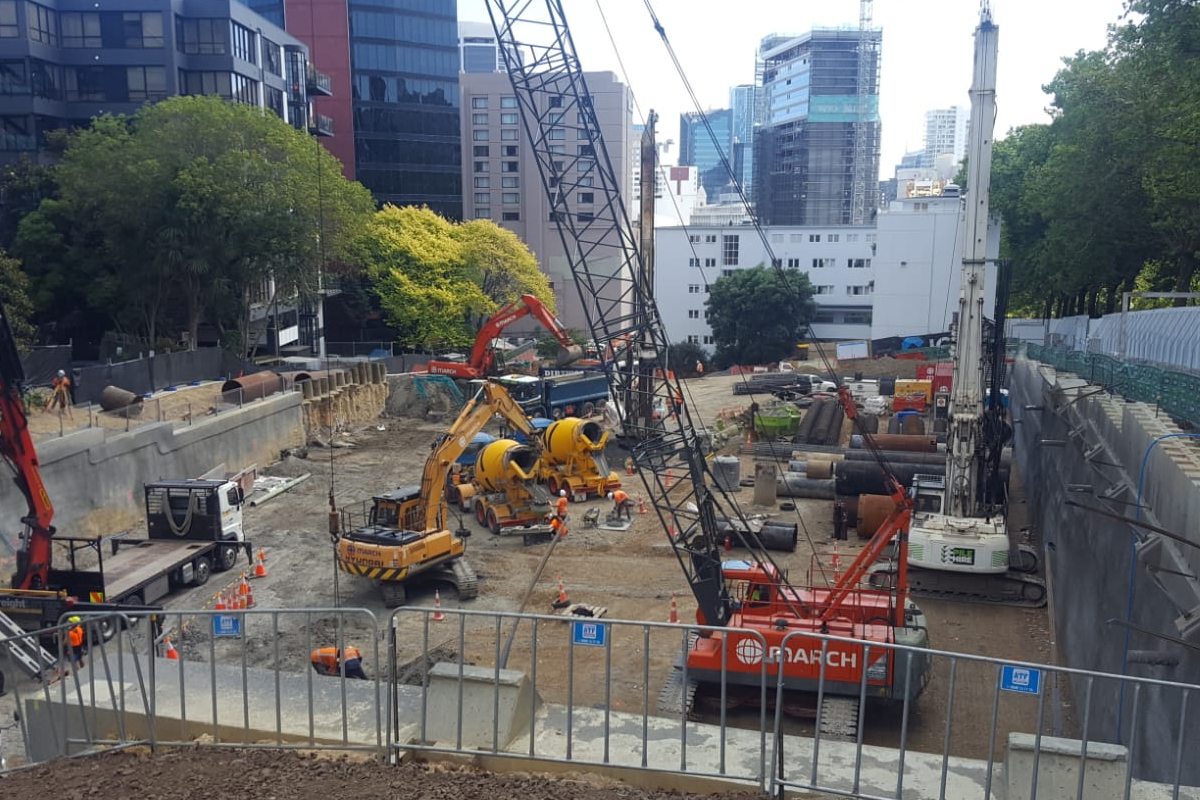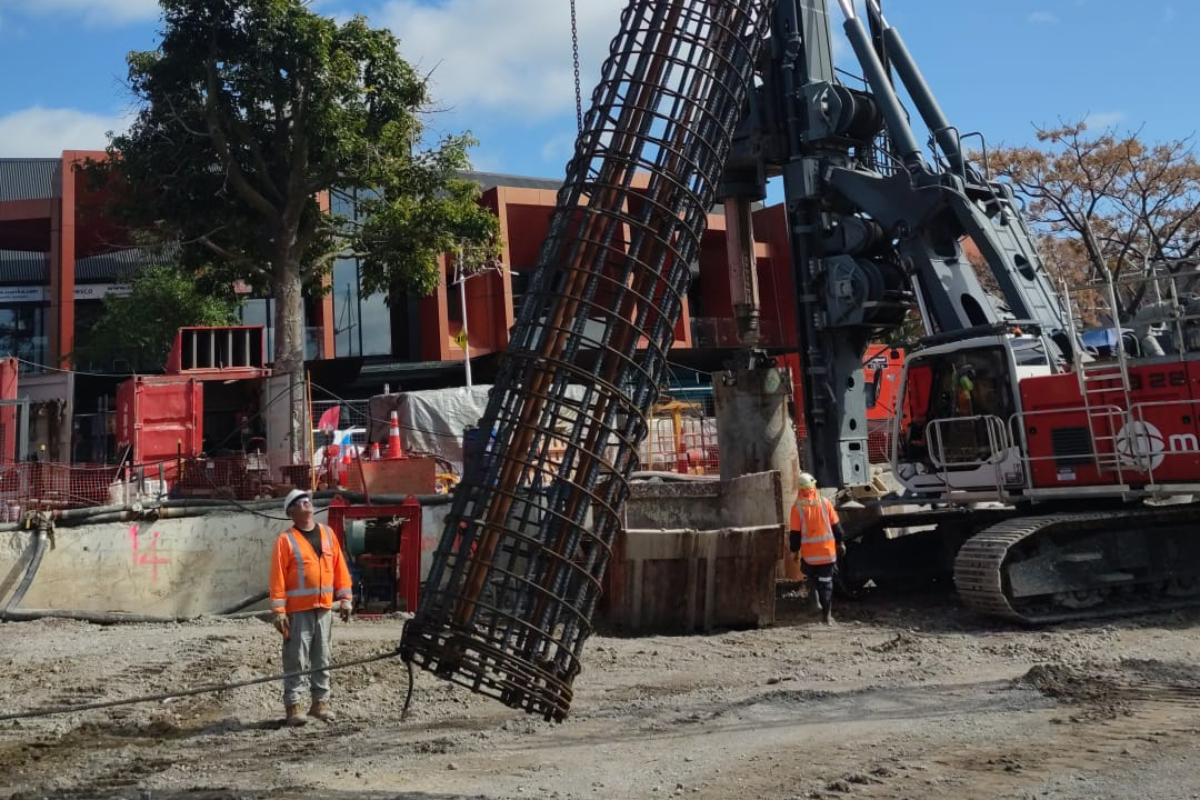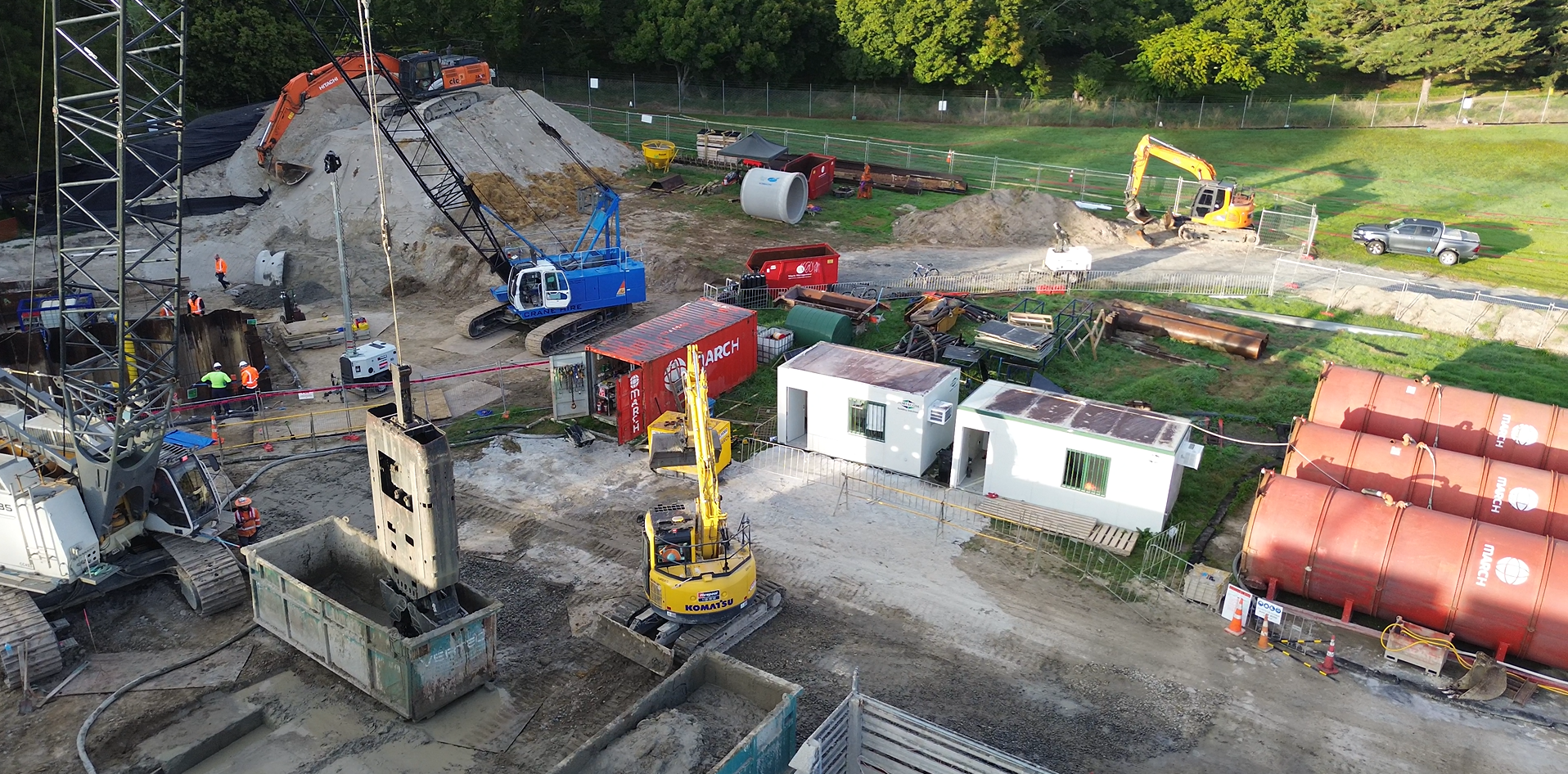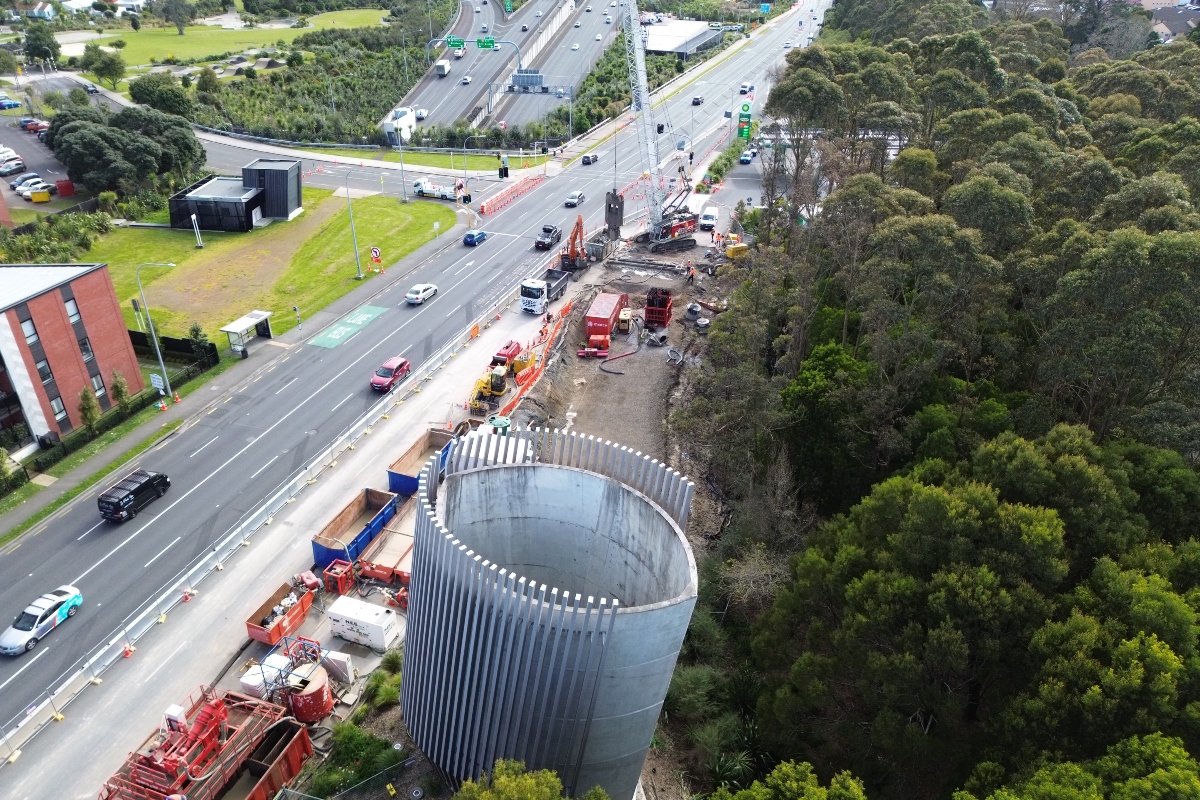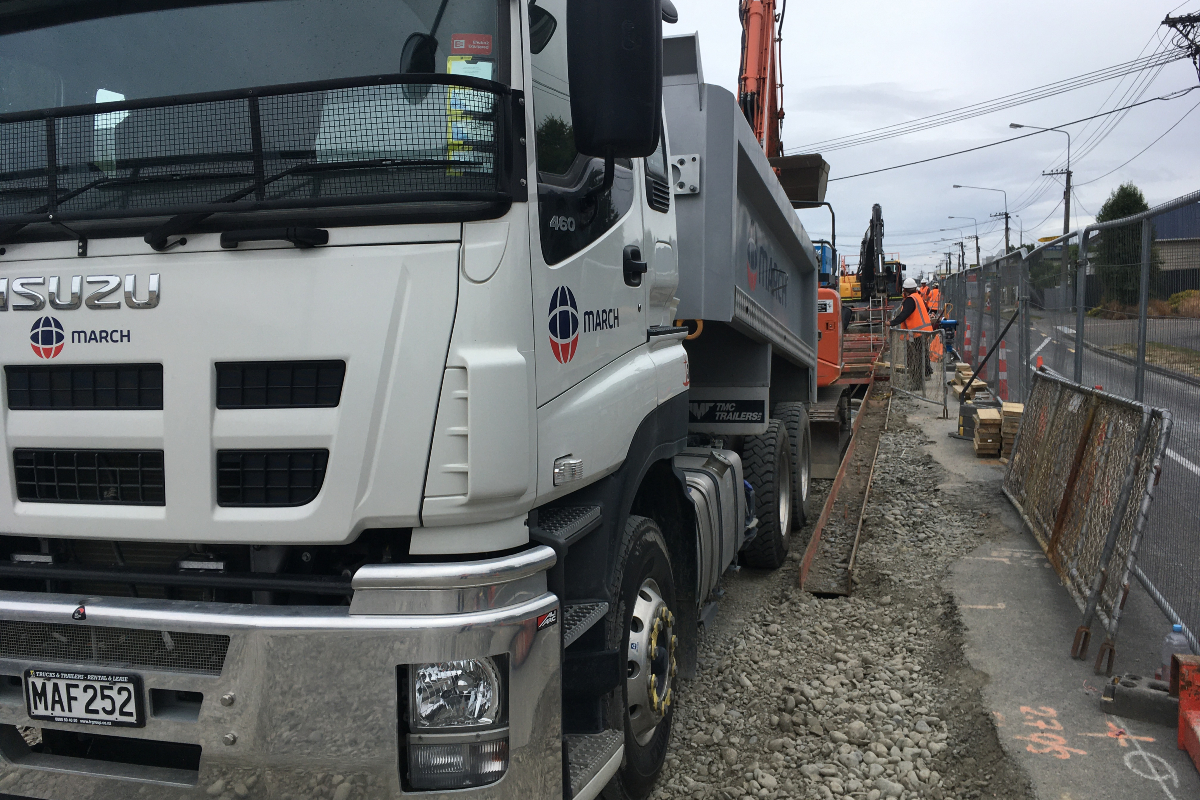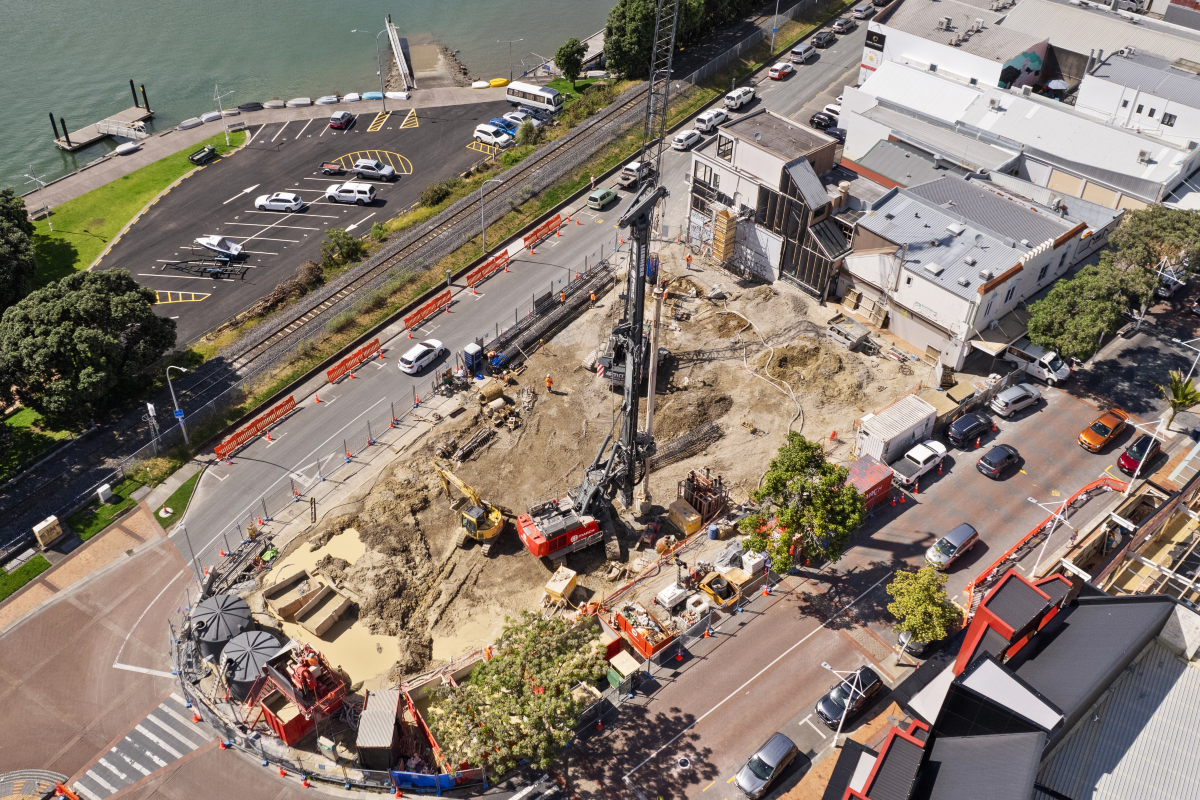Bored Piling
Tried and Tested
Bored piling is the most traditional form of piling and is suitable for carrying very high loads. They cope well with the most challenging ground conditions and are typically used as foundations for medium to large structures but can also be used for retaining walls e.g. basement construction
Our processes
Bored piles are constructed using hydraulic piling rigs that come with various interchangeable attachments like augers, buckets, or core barrels. These versatile tools are capable of handling all kinds of soil, whether it’s granular or cohesive, including rock with a strength of up to 100MPa. Augers are typically used in cohesive and dry non-cohesive ground, while digging buckets are employed in saturated granular strata. In harder strata, a combination of rock augers and core barrels is used. For LDA piles, a temporary steel casing is utilized to support unstable ground and ensure safe working conditions at the platform level.
The casings used can either be single-walled casings that are twisted or vibrated into the ground, or double-walled segmental casings equipped with a cutting shoe that can be installed using the rig’s rotary drive or an oscillator. In situations where obstructions or hard strata are encountered, heavy-duty casings are employed with high-torque rigs.
Depending on the ground conditions, support fluids such as bentonite or polymer may be more effective in stabilizing the pile bore compared to using longer casings.
Enhancements of pile capacity can be achieved through methods such as grooving of the shaft bore, or installation of base grouting tubes to allow for the piles to be pre-loaded.
Once the pile has been bored, a reinforcement cage is installed, and concrete is placed, often using a tremie, to complete the pile construction.

Related projects



